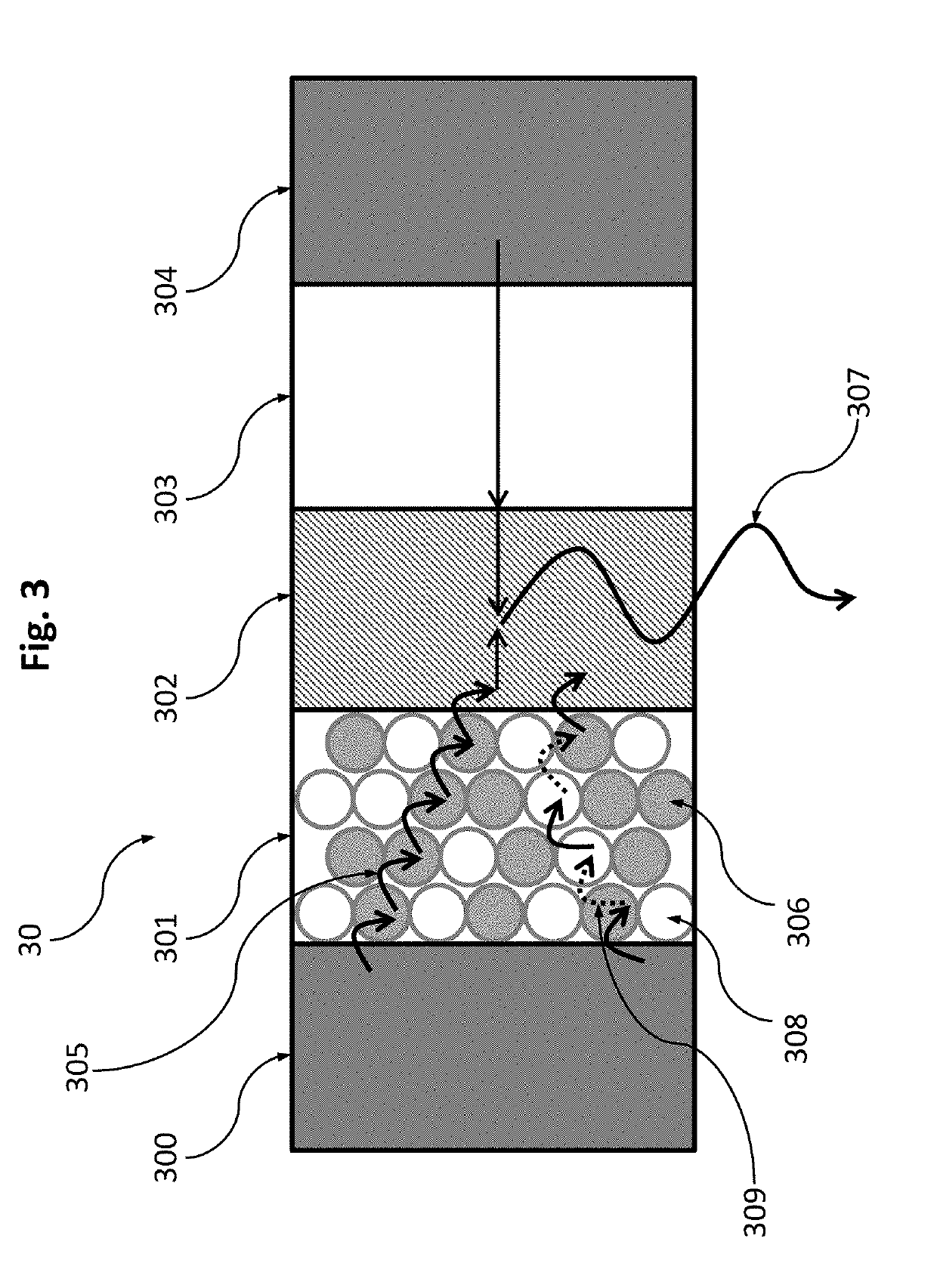Light-emitting device with mixed nanoparticle charge transport layer
a charge transport layer and light-emitting device technology, applied in the direction of solid-state devices, organic semiconductor devices, material nanotechnology, etc., can solve the problems of inability to optimize the charge mobility to match etl electron injection and htl hole injection, and the fixed mobility of etl for a given nanoparticle material configuration, etc., to achieve a larger tunability range and effective
- Summary
- Abstract
- Description
- Claims
- Application Information
AI Technical Summary
Benefits of technology
Problems solved by technology
Method used
Image
Examples
Embodiment Construction
[0025]Embodiments of the present invention will now be described with reference to the drawings, wherein like reference numerals are used to refer to like elements throughout. It will be understood that the figures are not necessarily to scale.
[0026]To provide a robust charge transfer layer with a specific charge mobility, embodiments of the present invention include a light-emitting device structure with a novel charge transfer layer comprised of a mixture of at least two different populations of nanoparticles, in which the two different populations of nanoparticles differ in the energetic alignment of either or both of their conduction band or valence band edge. Such a combination of nanoparticles provides an effective resistance that is not a simple average of their individual resistances, but provides a much larger range of tunability, due to the method of conduction that occurs in a nanoparticle matrix. The different populations of nanoparticles may be energetically non-aligned...
PUM
 Login to View More
Login to View More Abstract
Description
Claims
Application Information
 Login to View More
Login to View More - R&D
- Intellectual Property
- Life Sciences
- Materials
- Tech Scout
- Unparalleled Data Quality
- Higher Quality Content
- 60% Fewer Hallucinations
Browse by: Latest US Patents, China's latest patents, Technical Efficacy Thesaurus, Application Domain, Technology Topic, Popular Technical Reports.
© 2025 PatSnap. All rights reserved.Legal|Privacy policy|Modern Slavery Act Transparency Statement|Sitemap|About US| Contact US: help@patsnap.com



